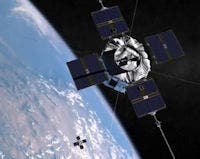
Surrounding our planet are rings of plasma, part of Earth’s magnetosphere, which are pulsing with radio waves. These aren’t audible to the human ear, but radio dishes and antennas always pick them up. Recently, NASA scientists recorded some of the Earth’s pulses and transformed them into acoustic waves – the end result is a short song chanted by our very planet.
Dubbed “Chorus”, the song is made of radio waves that oscillate at acoustic frequencies, between 0 and 10 kHz. Actually, similar sounds are often picked up by ham radio operators on Earth. You can listen to it in the player embedded below.
“Chorus emissions are front and center for the Storm Probe mission,” says Craig Kletzing of the University of Iowa. “They are thought to be one of the most important waves for energizing the electrons that make up the outer radiation belt.”
The sounds were picked up by the Electric and Magnetic Field Instrument Suite and Integrated Science (EMFISIS) on NASA’s recently launched Radiation Belt Storm Probes. The two probes are orbiting inside the radiation belts, sampling electromagnetic fields, counting the number of energetic particles, and listening to plasma waves of many frequencies. Though usually harmless, sometimes high-energy particles can endanger both satellites and astronauts.
source: NASA






